Dramatic chord progressions are super important in music production because they can add depth and emotion to your songs that people really respond to.
Plus, they create a sense of tension and resolution that keeps listeners engaged throughout the entire track.
This will help your songs stand out and connect with your audience like never before.
That’s why we’re breaking down everything you need to know about dramatic chord progressions, like:
- Elements of dramatic chord progressions ✓
- Emotional impact of chord progressions ✓
- Music theory essentials ✓
- Techniques for creating dramatic chord progressions ✓
- Using minor keys for sad chord progressions ✓
- Incorporating suspended chords ✓
- Adding seventh chords ✓
- How to turn a simple progression into a masterpiece ✓
- Utilizing dissonance & resolution ✓
- Top 10 dramatic chord progressions ✓
- Popular emotional chord progressions in Western music ✓
- Advanced tips and tricks for chord progressions ✓
- Much more about dramatic chord progressions ✓
After this article, you’ll know everything about creating dramatic/sad chord progressions that really touch people’s hearts and add complexity to your music.
It will make people feel deep emotions and help your songs to really captivate.
Plus, you’ll be able to stay ahead of the competition whether it’s your first progression or hundredth.
So, let’s dive in…
Table of Contents
- Elements of Dramatic Chord Progressions: Breaking it Down
- Techniques for Creating Dramatic Chord Progressions
- Top 10 Dramatic Chord Progressions
- #1. The ii-V-I Chord Progression
- #2. The I-vi-IV-V Chord Progression
- #3. The vi-IV-I-V Chord Progression
- #4. The I-vi-ii-V Chord Progression
- #5. The I-V-vi-IV Chord Progression
- #6. The iv-I-V-i Chord Progression
- #7. The i-VI-III-VII Chord Progression
- #8. The i-iv-v-i Chord Progression
- #9. The vi-V-IV-III Chord Progression
- Bonus: Dramatic Chord Progressions Tips & Tricks
- Dramatic Chord Progressions: Final Thoughts
Elements of Dramatic Chord Progressions: Breaking it Down
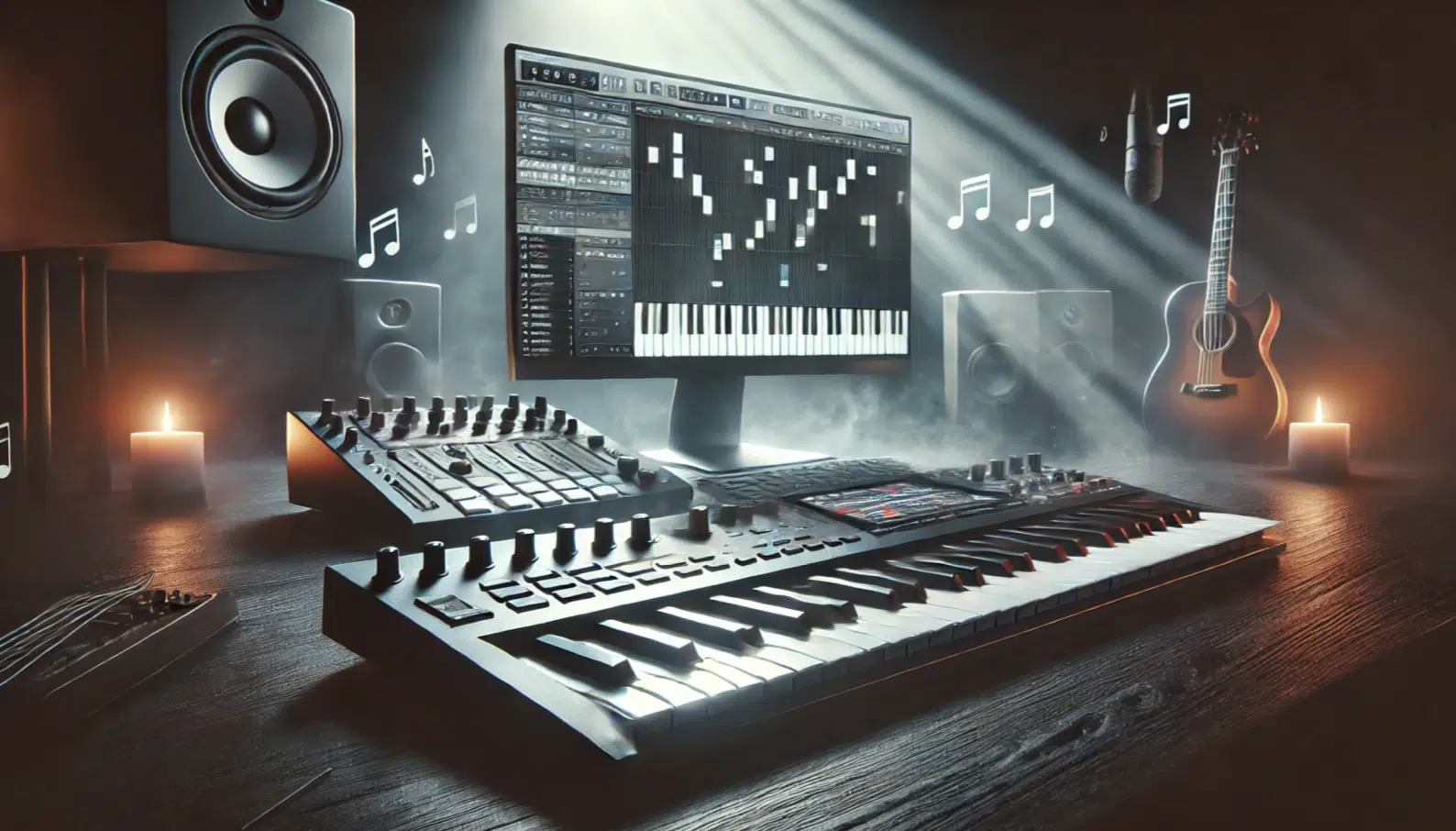
Dramatic chord progressions can transform your music, adding depth and emotion.
These progressions often include:
- Minor chords 一 Which give a darker, more emotional feel.
- Suspended chord 一 Which adds complexity.
- Seventh chords 一 Which adds tension.
Minor keys are also essential for sad chord progressions 一 making the music feel more somber and, in turn, irresistible.
Dissonance, which creates a sense of tension, and its resolution, which brings relief, are also key factors when it comes to dynamic progressions.
Dissonance occurs when notes clash, creating an uneasy sound that demands resolution.
For instance, a B diminished chord (B, D, F) introduces a lot of tension because the notes are close together in pitch, creating a dissonant sound.
This tension is resolved by moving to a more stable chord, such as an A minor chord (A, C, E), which feels more complete.
Bottom line, this push and pull between dissonance and resolution can make your dramatic chord progressions even more engaging and emotionally impactful.
By understanding these elements, you can create the perfect progression for any vibe.
-
Pro Tip: Emotional Impact of Chord Progressions
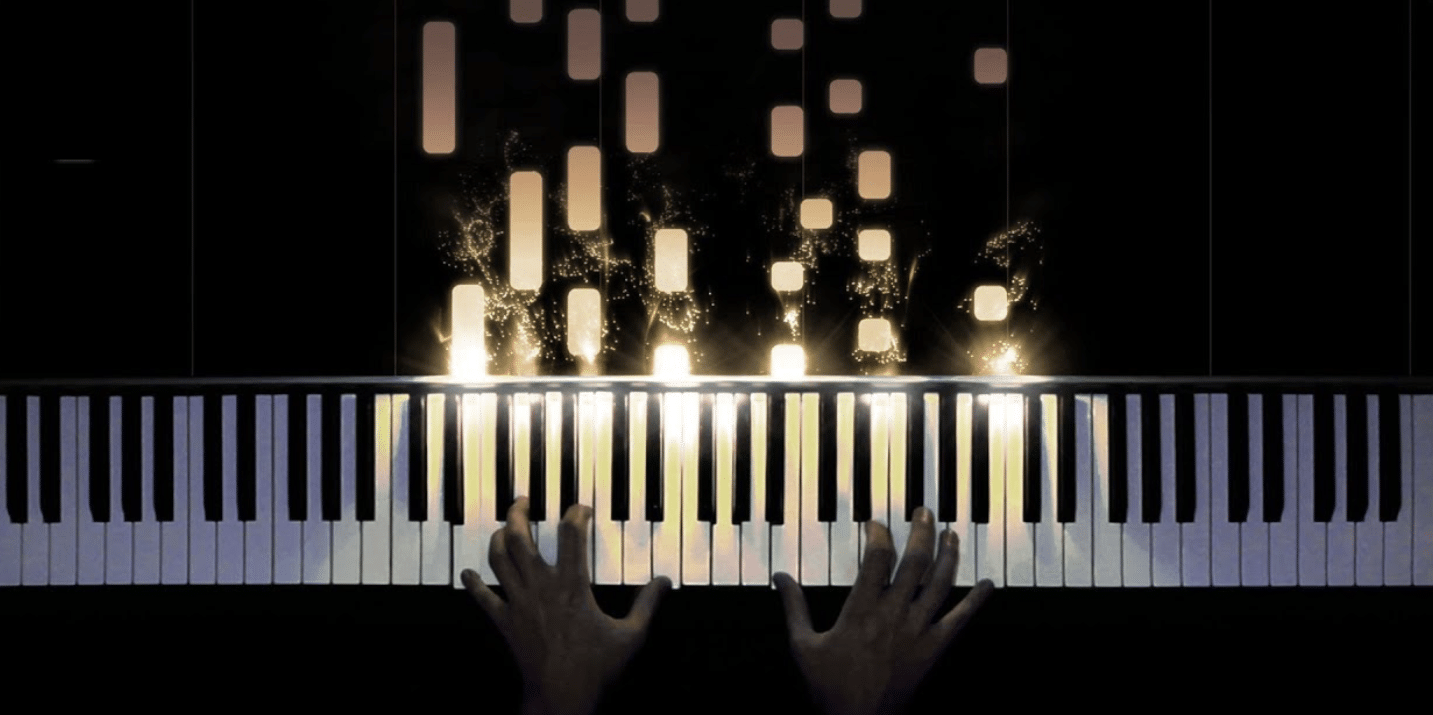
Chord progressions significantly impact the emotions you’re trying to convey in a song. Using minor chords can create sad chord progressions that evoke feelings of melancholy. Major chords, on the other hand, can make a song feel brighter and more uplifting. Experimenting with different chord progressions helps you find the right emotional tone for your music. Just keep that in mind, we’ll break it all down.
Techniques for Creating Dramatic Chord Progressions
To create dramatic chord progressions like a pro, you need to use specific techniques that add emotion and tension. So, let’s kick things off with some of the best ones for you to start your journey.
-
Using Minor Chords/Minor Keys
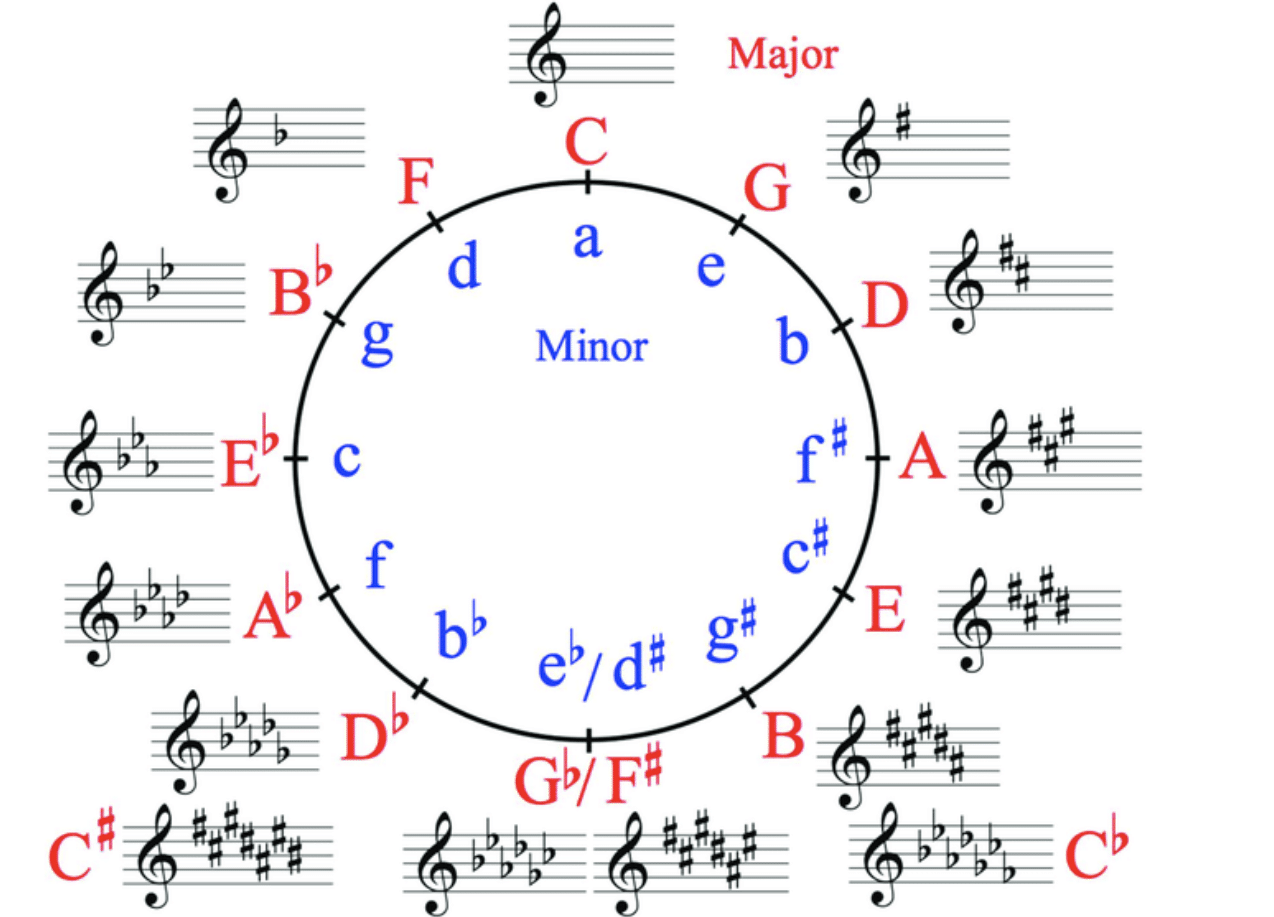
Minor keys are fundamental for creating dramatic and sad chord progressions as they use a specific set of notes that provide a darker, more emotional sound.
For example, the A minor key includes the notes A, B, C, D, E, F, and G.
Chord progressions in minor keys often use minor chords like the i chord (A minor) and the major vi chord (F major).
These chords will enhance the emotional depth of your music.
A common minor chord progression is the vi-iv-i-v, which uses the chords:
- F (F, A, C)
- D minor (D, F, A)
- A minor (A, C, E)
- E (E, G#, B)
It creates a strong sense of tension and resolution 一 making it ideal for more dramatic songs like the ones you’re aiming to lay down.
NOTE: Including minor iii chords, such as C major (C, E, G), into your progressions can add a layer of complexity and intrigue, which enhances the overall emotional impact.
-
Incorporating Suspended Chords
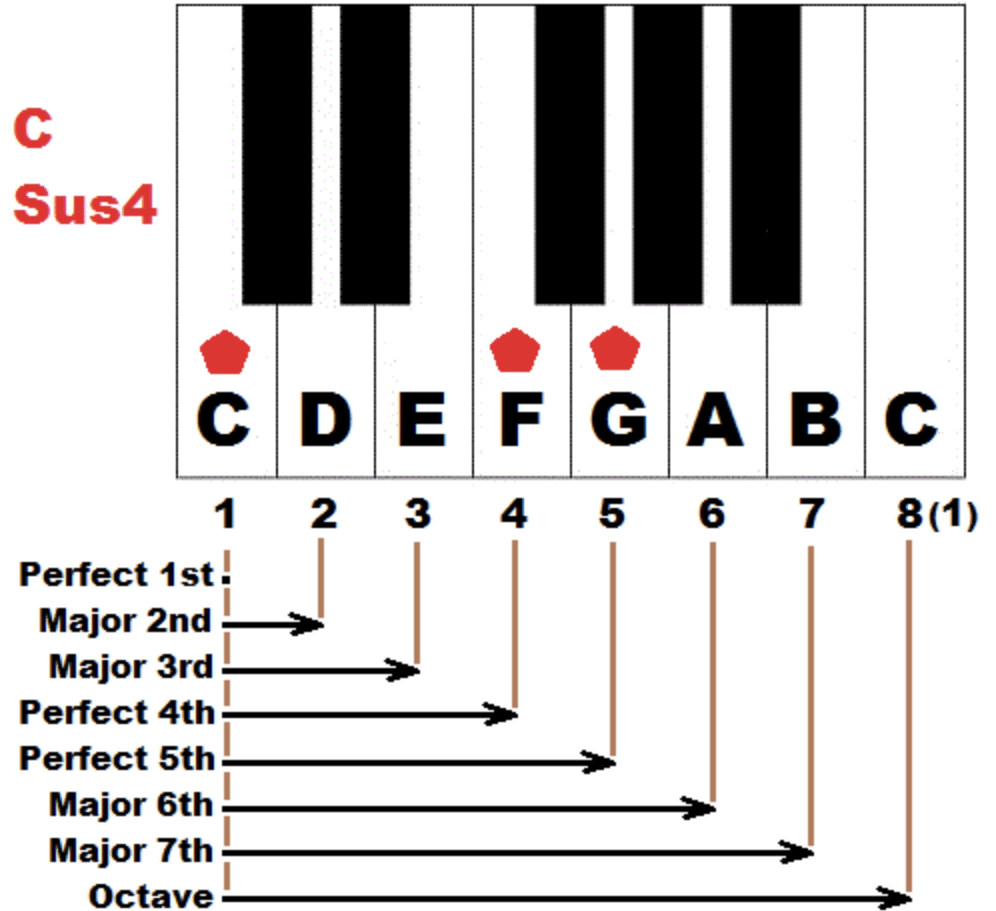
Suspended chords are perfect for adding a more tension-filled edge to your chord progressions, replacing the third note with:
- A second (sus2)
- A fourth (sus4)
This will create an open, unresolved sound which draws people in.
For example, a Dsus4 chord includes the notes D, G, and A, and the tension this creates will make people anxiously await the next chord, which is great.
Adding suspended chords to your progressions makes them more dramatic, soulful, and overall engaging.
A common use of suspended chords is resolving them to a major chord or minor chord, such as moving from Dsus4 to D major.
NOTE: Suspended chords can also be used to build anticipation in a progression 一 heightening the listener’s emotional response before the resolution.
For example, the transition from Asus2 to A minor creates an intriguing shift that can add even more depth and expressiveness to your track.
-
Adding Seventh Chords
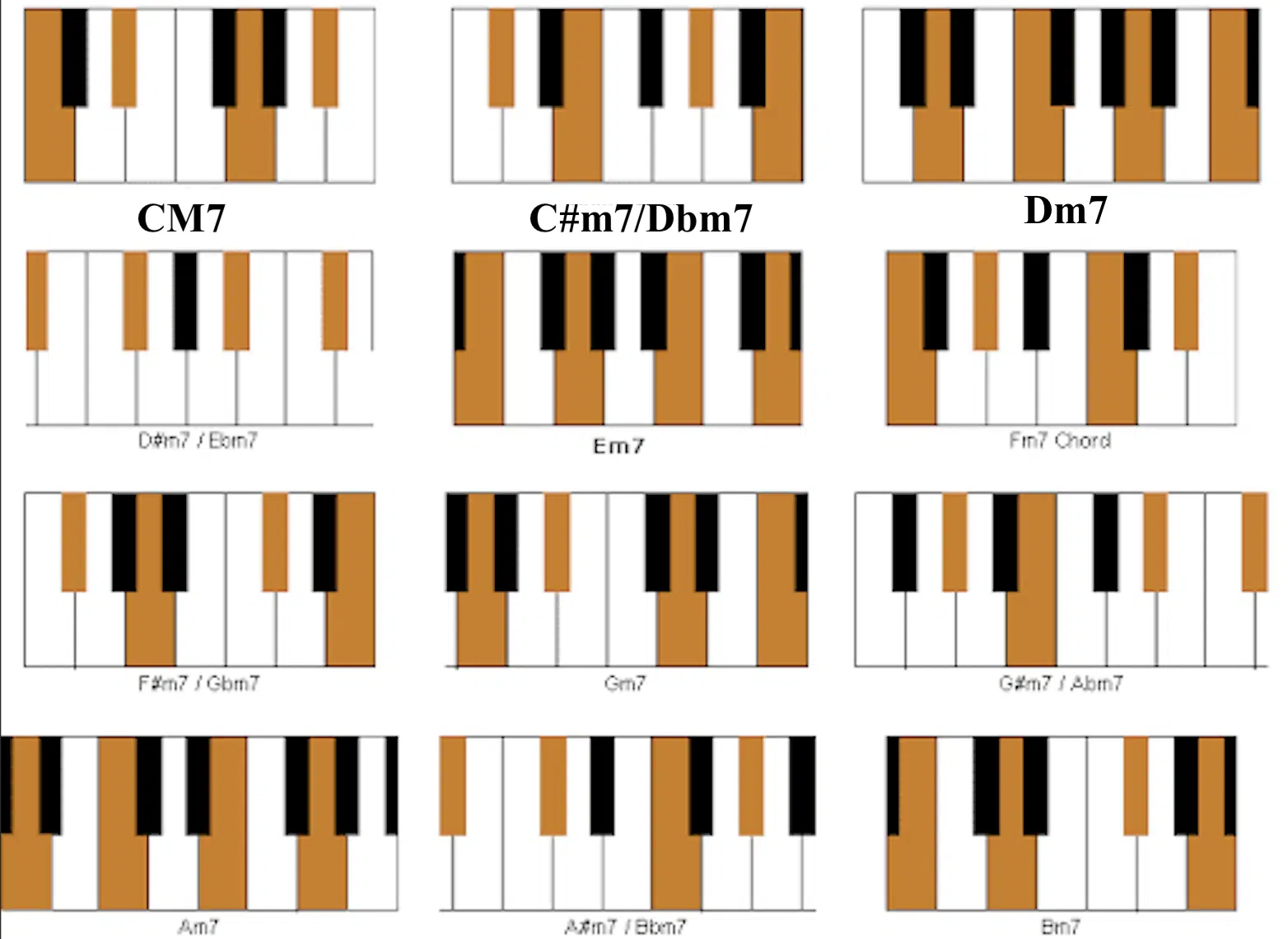
Seventh chords are also a great way to add depth to your chord progressions, including a fourth note, which can be a:
- Major seventh
- Minor seventh
- Dominant seventh
For example, a C major seventh chord (Cmaj7) includes the notes C, E, G, and B, with the extra note making the chord sound fuller and more complex.
A minor seventh chord (Am7) includes A, C, E, and G 一 adding a layer of emotion to the progression.
Using different types of seventh chords in your progressions can create a fuller sound, so make sure to play around with some combinations.
NOTE: Seventh chords are versatile and can add both tension and resolution within a progression.
For example, moving from G7 (G, B, D, F) to Cmaj7 creates a satisfying resolution, while transitioning from Am7 to Dm7 (D, F, A, C) can add a soulful, introspective feel to your music.
Top 10 Dramatic Chord Progressions
Now that you know some techniques (we’ll also provide you some after the following 10 common chord progressions), let’s break down the most popular chord progressions that are described as sad, emotional, and dramatic. Each chord progression brings its unique flavor and emotional impact to your music. Side note, to keep things simple, most of the examples will be in A minor or C major.
#1. The ii-V-I Chord Progression
The ii-V-I progression is a true staple in jazz and other popular music (soft music, if you will) due to its smooth and satisfying resolution.
It involves:
- Moving from a minor chord (ii)
- Then, to a dominant chord (V)
- Finally, resolving to a major chord (I)
For example, in the key of C major, the chord progression would be Dm7 (D, F, A, C) to G7 (G, B, D, F) to Cmaj7 (C, E, G, B).
This chord progression creates a sense of journey and return 一 making the listener feel a resolution that is both uplifting and fulfilling.
A popular example is “Thinking Out Loud” by Ed Sheeran, where this progression provides an epic harmonic backdrop.
It’s a great progression to start practicing with, that’s for sure.
#2. The I-vi-IV-V Chord Progression
The I-vi-IV-V progression is renowned for its nostalgic and hopeful sound, which you’ll often hear in doo-wop and pop music (and many genres that are similar).
It starts with a major chord (I), moves to a minor chord (vi), then to another major chord (IV), and ends on a dominant chord (V).
In the key of C major, this would be C (C, E, G), Am (A, C, E), F (F, A, C), and G (G, B, D).
That minor vi chord introduces a touch of melancholy, which is perfectly balanced by the uplifting IV and V chords.
This beautiful progression is famously used in “Stand By Me” by Ben E. King, where it evokes a sense of almost toxic love and support.
#3. The vi-IV-I-V Chord Progression
The vi-IV-I-V progression, also known as the “sensitive female chord progression” (but don’t tell your girlfriend) is huge in modern pop music.
It starts with a minor chord (vi), moves to a major chord (IV), then another major chord (I), and ends on a dominant chord (V).
In the key of C major, this progression would be:
- Am (A, C, E)
- F (F, A, C)
- C (C, E, G)
- G (G, B, D)
This super popular progression brings a sense of longing and resolution 一 making it perfect for emotional songs.
A well-known example is “With or Without You” by U2, where the unique progression adds to the song’s emotional intensity and depth.
If you’re going for that dramatic, almost goth sound, this one is the way to go.
#4. The I-vi-ii-V Chord Progression
The I-vi-ii-V progression offers a smooth, flowing sound that:
- Starts with a major chord (I)
- Moves to a minor chord (vi)
- Then to another minor chord (ii)
- Ends on a dominant chord (V)
In the key of C major, this would be C (C, E, G), Am (A, C, E), Dm (D, F, A), and G (G, B, D).
The transition from major to minor chords provides a bittersweet flavor, perfect for conveying specific/nuanced emotions and any unchained melody.
It’s famously used in “All Of Me” by John Legend, a progression that carries a timeless, sentimental quality people are really drawn to.
It can really add a beautifully addicting edge to any beat.
#5. The I-V-vi-IV Chord Progression
The I-V-vi-IV progression is one of the most versatile and widely used progressions in contemporary music, so pay attention if you’re a producer or artist.
It starts with a major chord (I), moves to a dominant chord (V), then to a minor chord (vi), and ends on another major IV chord.
In the key of C major, this progression would be:
- C (C, E, G)
- G (G, B, D)
- Am (A, C, E)
- F (F, A, C)
This sad chord progression creates a strong emotional pull with a sense of stability and resolution (which people really react to on a subconscious level).
It’s used in “Let It Be” by The Beatles, where it provides a comforting and uplifting backdrop to the lyrics.
NOTE: If you’re not familiar with this particular progression, make sure to really nail it down, as you’ll probably be using it all the time.
#6. The iv-I-V-i Chord Progression
The iv-I-V-i progression creates a dramatic and haunting sound, often used in minor key compositions to really capture people’s attention.
It starts with a sad minor chord (iv), moves to a major chord (I), then to a dominant chord (V), and ends on a minor chord (i).
In the key of A minor, this would be:
- Dm (D, F, A)
- A (A, C#, E)
- E (E, G#, B)
- Am (A, C, E)
This progression’s mixture of minor and major chord sequence creates a compelling tension and release.
It’s flawlessly heard in “Rolling in the Deep” by Adele, where it adds to the song’s powerful and intense vibe.
And, I’m sure you can remember how insanely popular that song was, so make sure to not overlook this one, it’s the basis of many great songs.
#7. The i-VI-III-VII Chord Progression
The i-VI-III-VII progression is super common in classical and cinematic music for its grand, sweeping feel that immerses people like no other.
It starts with a minor chord (i), moves to a major chord (VI), then another major chord (III), and ends on a dominant chord (VII).
In the key of A minor, this would be:
- Am (A, C, E)
- F (F, A, C)
- C (C, E, G)
- G (G, B, D)
This progression creates a sense of drama and epic grandeur 一 making it perfect for epic and emotional pieces.
A great example is “The Imperial March” from Star Wars by John Williams, where it contributes to the iconic, powerful sound.
NOTE: In the song “While My Guitar Gently Weeps,” the progression moves from a minor triad to a minor iii chord, creating a haunting contrast with the following major triad.
Side note, if you want to learn all about triads, we’ve got you covered.
#8. The i-iv-v-i Chord Progression
The i-iv-v-i progression is a staple in blues and rock music because it brings a super strong sense of resolution and stability to the table.
It starts with a minor chord (i), moves to another minor chord (iv), then to a dominant chord (v), and ends on the minor chord (i).
In the key of A minor, this would be:
- Am (A, C, E)
- Dm (D, F, A)
- Em (E, G, B)
- Am (A, C, E)
This progression’s repetition and resolution make it ideal for building tension and release (and, FYI, it’s super popular in movies for its power).
A great example is “Ain’t No Sunshine” by Bill Withers, where it enhances the song’s soulful and melancholic feel.
#9. The vi-V-IV-III Chord Progression
The vi-V-IV-III progression creates a unique and emotional sound that flows beautifully and really gets a reaction from people (a good one, that is).
It starts with a minor chord (vi), moves to a dominant chord (V), then to a major chord (IV), and ends on another major chord (III).
In the key of A minor, this would be:
- F (F, A, C)
- E (E, G#, B)
- Dm (D, F, A)
- C (C, E, G)
This progression’s blend of major chords and minor chords adds a sick emotional texture that you can instantly hear.
It’s heard in the classic “Somebody That I Used to Know” by Gotye, where it blows up the song’s eccentric, almost haunting and nostalgic atmosphere.
Bonus: Dramatic Chord Progressions Tips & Tricks
Now that you know the 10 most popular dramatic chord progressions, you’ll need to elevate them, which is where the following bonus techniques come in.
-
Playing Around with First Inversions
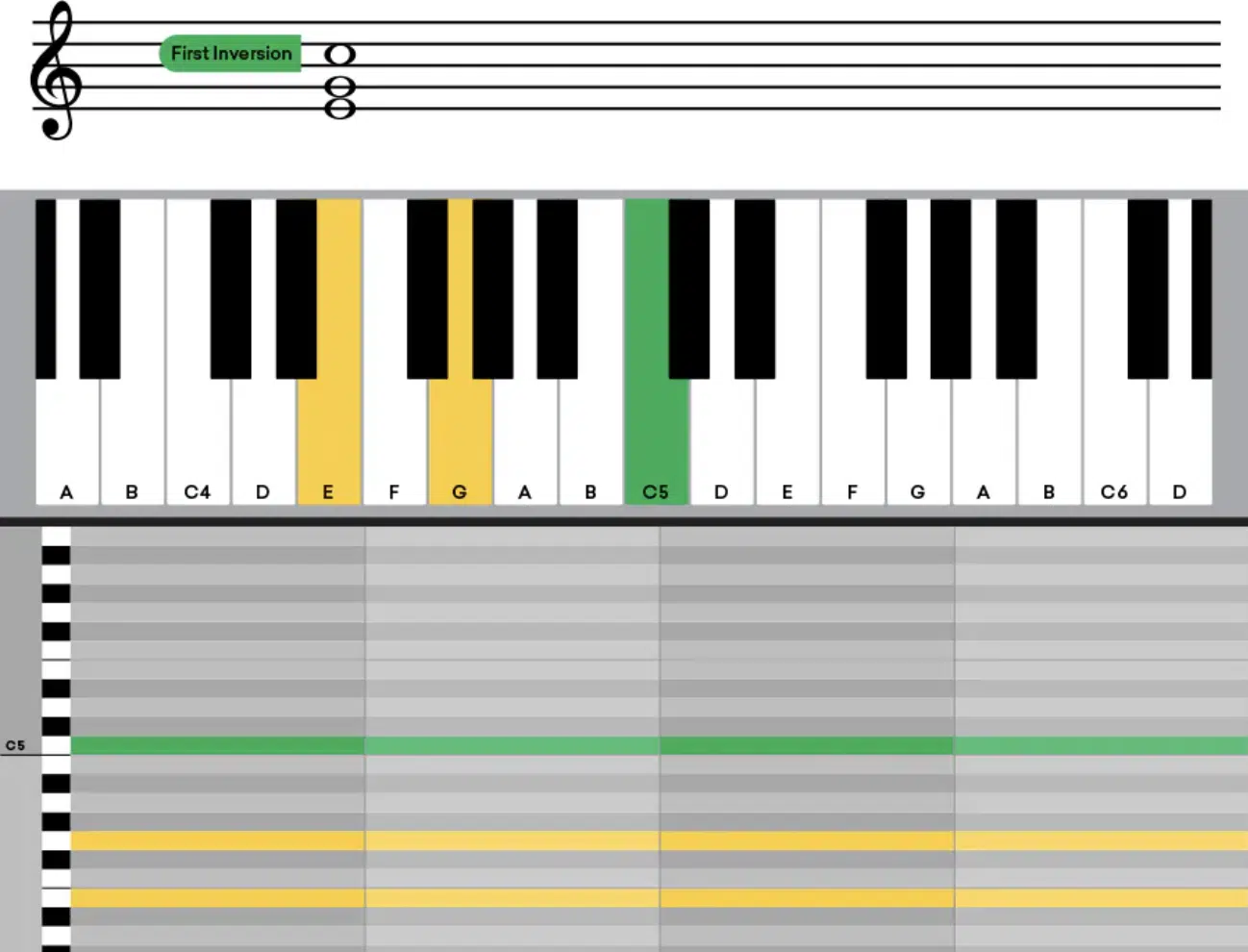
When working with dramatic chord progressions, you’ve got to try experimenting with first inversions to add variety.
It’ll really give that extra ‘oomph’ that your competition might not add.
First inversions involve placing the third of the chord in the bass, which can change the chord’s sound and feel.
For example, instead of playing a C major chord (C, E, G) with C in the bass, play E in the bass (E, G, C).
It sounds like such a simple thing, but it can really make your emotional chord progressions sound smoother and more connected.
Using a first inversion will always come through if you’re looking to create an unmatched sense of movement and tension.
Bottom line, first inversions help your music sound more sophisticated and dynamic, so make sure to play around with them.
-
Creating Variations Like a Boss

Creating variations of your emotional chord progressions keeps your music fresh and engaging (which is very important these days).
One way to do this is by changing the order of the chord sequence…
For example, if you’re using the vi-IV-I-V progression, try switching it to IV-vi-V-I.
Another technique is to add or remove notes (two notes, three notes, etc.) to create different voicings, which can give your progressions a new sound without changing the chords themselves.
Remember, adding variations will help prevent your music from sounding repetitive.
So, make sure to play around with different variations to find what works best for your songs.
You can also experiment with different inversions of the same chords to create subtle shifts in harmony and texture.
Also, incorporating passing chords, such as diminished or augmented chords, can add unexpected twists and turns to keep your listeners engaged.
NOTE: It’s all about getting creative, thinking outside of the box, and never feel like your have to follow the rules of music theory.
-
Layering and Instrumentation
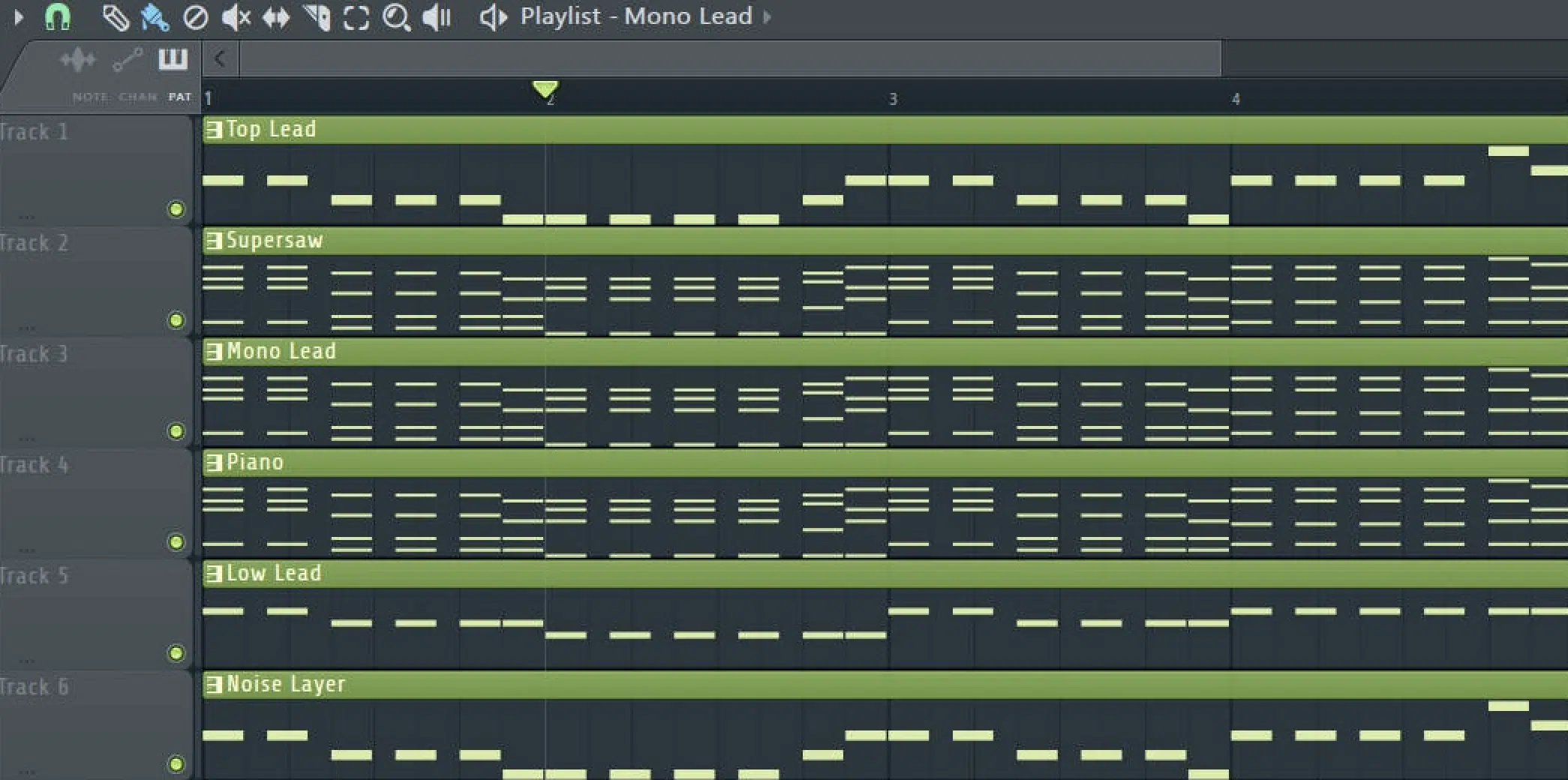
Layering and instrumentation can, of course, enhance the emotional impact of your chord progressions even further.
So, try using different instruments to play each chord, such as a piano for the bass notes and strings for the higher notes.
This ccreates an amazing, more complex sound.
You can also layer different sounds, like a soft pad under a piano chord progression to add depth and texture to your song.
Also, try adding a subtle guitar arpeggio or a string ensemble to enhance the emotional impact of your dramatic chord progressions.
Pro Tip: Combining electronic elements, such as synthesizers, with traditional instruments can create a unique and powerful sonic landscape. Don’t be afraid to mix genres and experiment with unconventional sounds to make your chord progressions truly stand out.
Dramatic Chord Progressions: Final Thoughts
Dramatic chord progressions are a powerful tool to have in your music production arsenal, period.
They can seriously enhance the emotional depth of your tracks and keep listeners engaged all day long.
Plus, they’ll help your songs stand out and never sound basic or boring again, which will ensure your listeners don’t dismiss your music.
If you want to really elevate your beats even further, make sure to check out the invaluable Free Essential Advanced MIDI Chord Progressions pack.
It includes 24 unique MIDI chord progressions that will not only help you create more impactful music but also understand how to create killer progressions like a boss.
When you use them, you’ll set yourself apart from 99% of producers who only have knowledge about basic chords and progressions.
They seriously take years of music theory experience to master, and you don’t have time for that, am I right?
And yes, everything is 100% royalty-free, done-for-you, and usable with all your favorite sounds, so you can get as creative as possible.
So, go ahead and start experimenting with these dramatic chord progressions today and see how they transform your music with the tips and tricks you now have.
Because, at the end of the day, happy music is great, but dramatic sounds can really reel people in and make them lifelong fans.
Until next time…







Leave a Reply
You must belogged in to post a comment.